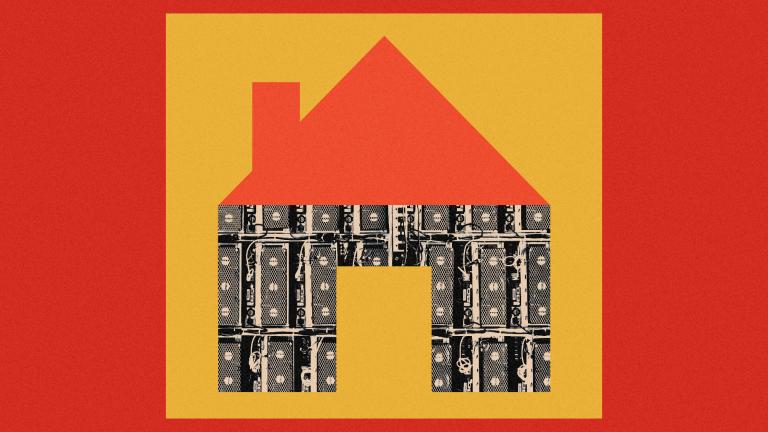 Reach for the sky.Photo: John ReynoldsYesterday I moderated a panel at the Midwest Energy Solutions Conference called “Creating Lasting Impacts: Behavior Change, Consumer Marketing, and Claimed Savings.” (Hott, right?!) It was largely focused on electric utility programs designed to influence customer behavior.
Reach for the sky.Photo: John ReynoldsYesterday I moderated a panel at the Midwest Energy Solutions Conference called “Creating Lasting Impacts: Behavior Change, Consumer Marketing, and Claimed Savings.” (Hott, right?!) It was largely focused on electric utility programs designed to influence customer behavior.
My takeaway: We haven’t yet seen even a fraction of the potential for these efforts.
The program we learned most about was Power Smart Pricing, implemented by a utility called Ameren Illinois. (Ameren serves about 1.2 million customers; close to 11,000 participated in the program.) As you may know, one of the real problems in electricity markets is that wholesale power prices vary throughout the day but retail customers pay one flat rate all the time. They have no idea when the power they’re using is more or less expensive, and thus no incentive to vary their usage.
The idea behind “real-time pricing” is to pass those varying prices through to consumers, so that they can adjust their use accordingly. Power Smart Pricing isn’t exactly “real-time” — they tell participating customers once a day what power prices are expected to be the following day (buying on so-called “day-ahead markets”). They also show customers the curve that prices follow throughout the day, starting low and rising during peak-use hours.
The results have been roughly as you’d predict. Variable-pricing customers cut back during peak hours — by 5 or more percent sometimes — but use a bit more during times when power prices are low. The net result is a 1 to 3 percent drop in overall use.
The panel also included Pete Curtice from OPower, a company I’ve written about before. OPower works with utilities to provide customers relevant information about how their power use ranks relative to their peers and how to improve their position. Curtice presented their latest results, which show that their programs also tend to produce 2-3 percent drops in energy use.
This leads some folks — see here — to ask, is this really the best we can hope for? A 2 or 3 percent drop in energy use? It seems to render all the hype about behavior-change programs somewhat moot. Not that impressive.
To which I have two responses. One, a 3 percent reduction in demand is nothing to sneeze at. Over millions or tens of millions of consumers, it adds up.
But more to the point, I think we’ve only begun to see what these programs are capable of. After all, Power Smart Pricing is fairly primitive. You tell customers today what tomorrow’s prices will be and then leave them to remember to change the time they wash their clothes or run the dishwasher. It’s better than flat pricing, but not by a lot.
What if you combined real-time pricing with OPower’s brand of contextualized, insightful feedback on use? What if you combined both of those with a community-based marketing plan that used local leaders to communicate the benefits of the program? What if you standardized all that — the set-up, the administration, the evaluation — and spread it to more utilities, with a common database of best practices that’s continually updated? What if all that were combined with the rollout of smart-grid technology like net-connected appliances, home energy-management software, and electric vehicles, so that customers had more tools with which to respond to price signals?
And then what if behind all that, electricity rates were steadily rising, driving demand for these kinds of programs?
Once all those pieces come together — and I expect that to happen over the next few years — you can see these programs starting to get upwards of 10, even 15 percent reductions. That’s a big deal. Watch me try to explain that to Brian Rogal of Midwest Energy News:




